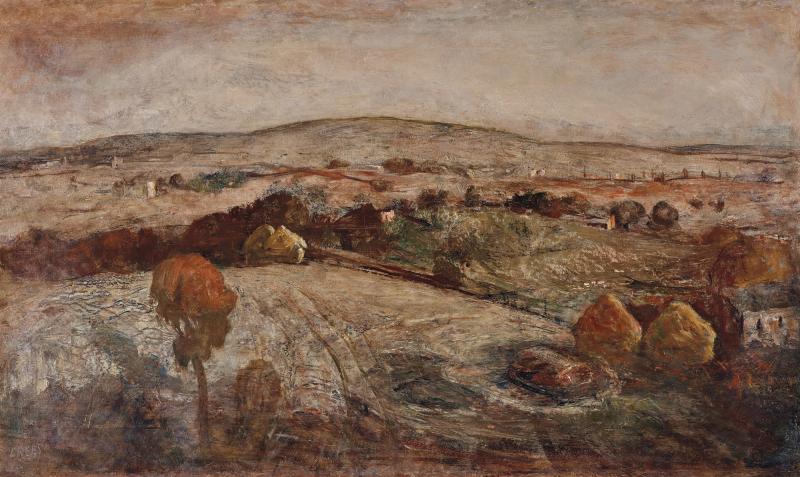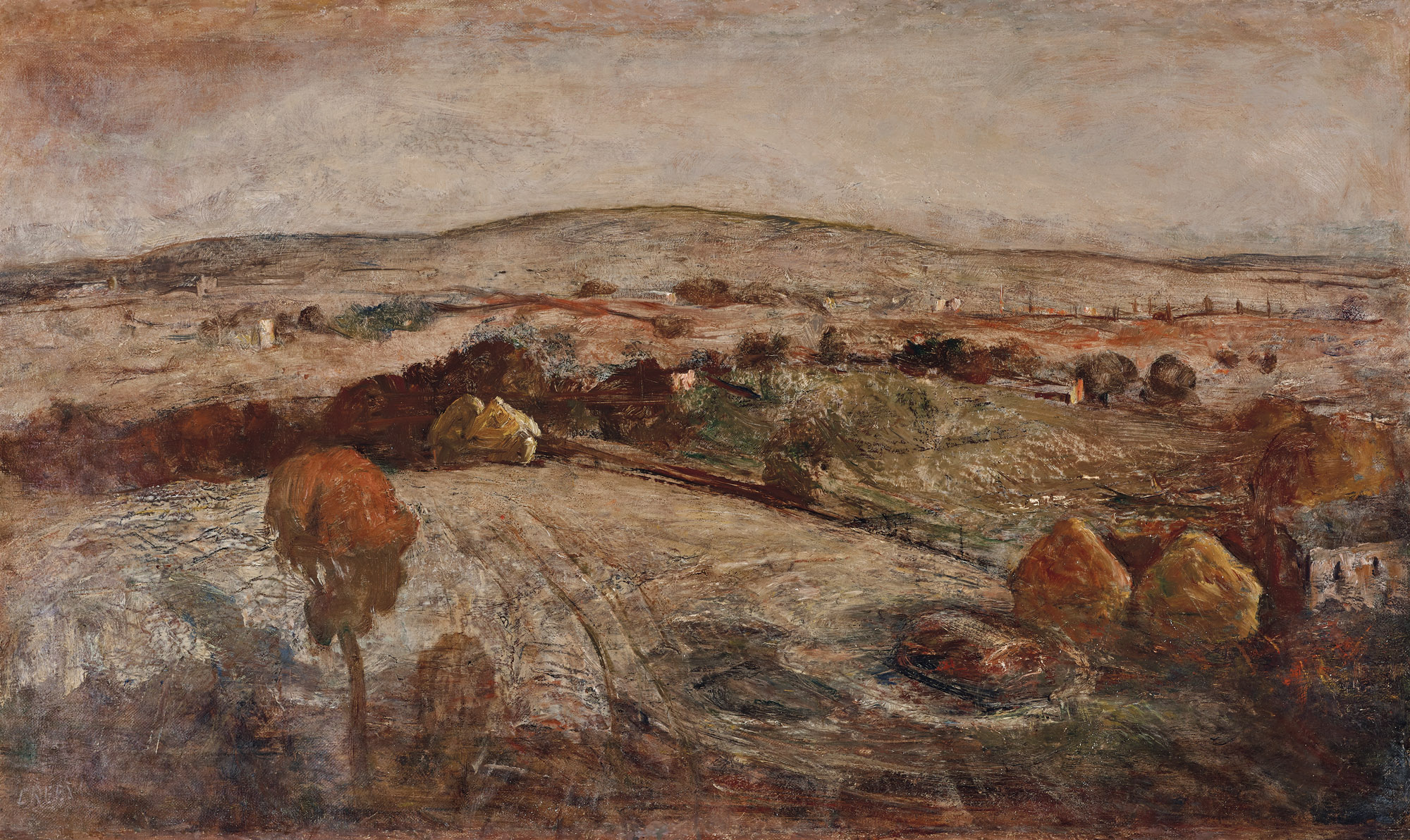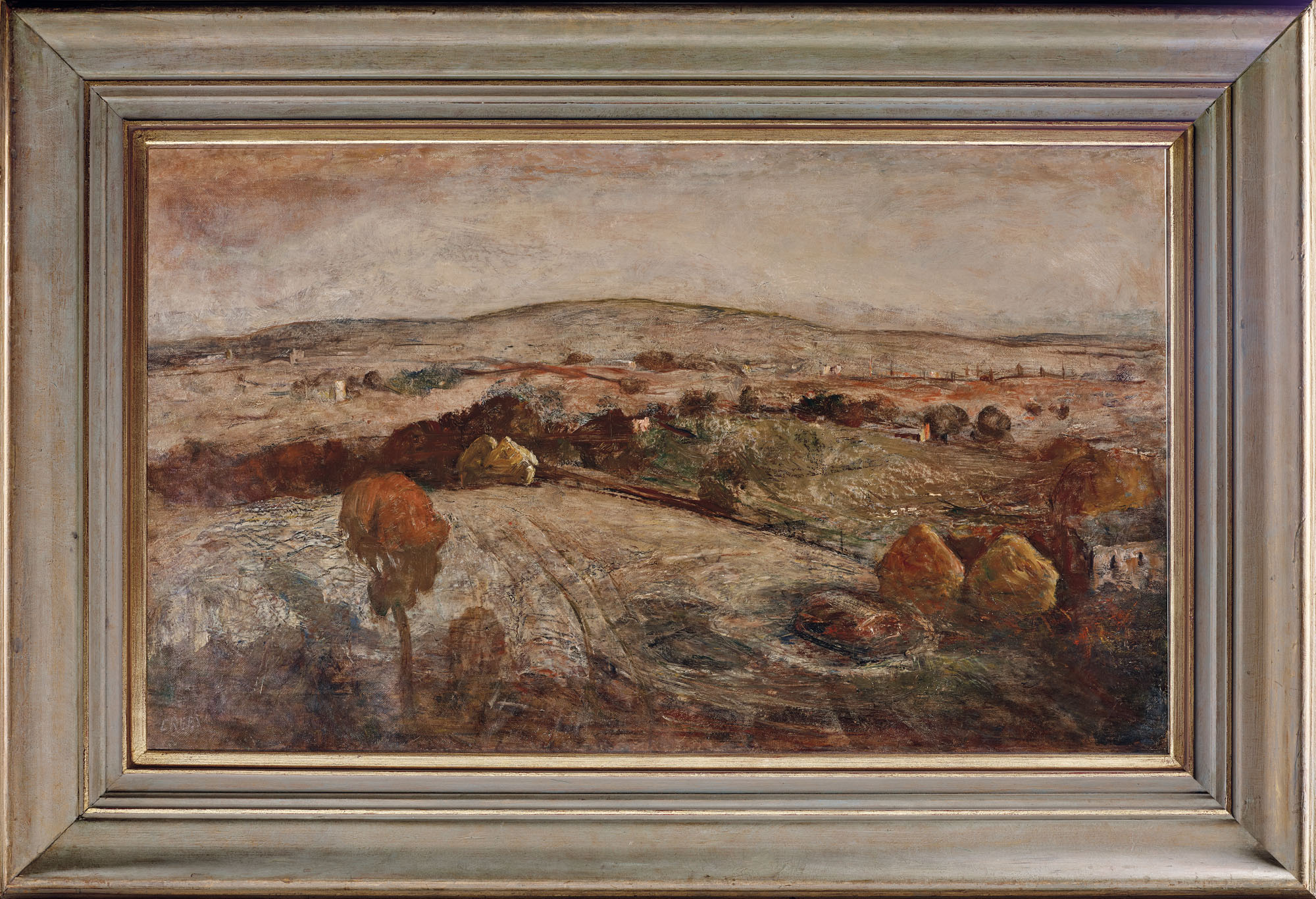LLOYD REES (1895-1988)
Hills of Bathurst c1944
Estimate: $50000 - 70000
Description
LLOYD REES (1895-1988)
Hills of Bathurst c1944
oil on canvas
46.0 x 76.5 cm; 66.5 x 97.0 cm (framed)
signed lower left: L REES
Provenance:
Macquarie Galleries, Sydney
Private collection
Christie's, London, 4 June 1985, lot 281
Private collection
Geoff K. Gray, Sydney, 3 March 1986, lot 163
Joseph Brown Gallery, Melbourne, 1986
The Wesfarmers Collection of Australian Art, Perth
Deutscher + Hackett, Melbourne, 29 August 2012, lot 5
Private collection, Sydney
Exhibited:
Society of Artists Annual Exhibition, Education Department Gallery, Sydney, 24 August - 11 September 1946
The Song of the Lamb: The Wesfarmers Collection of Australian Art, Art Gallery of Western Australia, Perth, 19 August - 2 October 1989 (illus. exhibition catalogue, p.91)
Reference:
Society of Artists Book 1946-7, Ure Smith, Sydney, 1947, p.57 (illus.)
Ure Smith, S. (ed.), Present Day Art in Australia, Ure Smith, Sydney, 1949, p.23 (illus.)
Estimate: $50000 - 70000
Artists in Australia have traditionally been linked with specific areas: Arthur Streeton (1867-1943) with the Dandenongs, Fred Williams (1827-1982) with the You Yangs, Arthur Boyd (1920-1999) with the Shoalhaven and Wimmera. For Lloyd Rees, the town of Bathurst, 200 kilometres west of Sydney, held a unique and enduring attraction. Rees’ longstanding association with Bathurst began with his marriage in 1931 to Marjory Pollard, whose family had settled in the area in 1886. The couple visited Bathurst regularly, usually in spring and autumn when the Central Tablelands plains were ripe for painting. Rees described his, ‘love for the city and its countryside, which I have visited for over forty years and painted pictures on practically every occasion.’1
Rees’ biographer Renée Free explains, ‘the Bathurst plains interested Rees… for they had a pastoral quality that appealed to him.’2 This pastoral emphasis likely derives from his affinity for the European masters, including Titian (c1488-1576), Claude Lorraine (1600-1682), and Jean-Baptiste-Camille Corot (1796-1875). His works throughout the 1940s are reminiscent of Titian’s folded hills, with that strong sense of idyllic pastoral calmness we see in Hills of Bathurst c1944. Furthermore, Free notes that, ‘Rees’ hill landscapes are the product of mediation on a motif over a long period, the method of Corot.’3
A persistent focus throughout Rees’ oeuvre is the effect of light on the landscape, particularly how the time of day changes the atmosphere, with twilight being a favourite. ‘Sometimes the season, or the time of day, is the subject, independent of when the work was painted. Some of Rees’ most beautiful paintings are of evening when the tonal range is narrow and forms stand out clearly.’4 This can be seen in Hills of Bathurst, where the wistful evening sky blankets the plains with a sense of the approaching night. As fellow artist John Olsen (1928-2023) put it, Rees’ landscapes employed, ‘sombre elegiac tonalities that induced a feeling of warm earth regretfully saying farewell to an evening sky.’5
The sweeping hills that rise from the grassy plains surrounding Bathurst cause the horizon line in Rees’ picture to swell upwards into the sky. These subtle curves are reminiscent of the those of the female form. Rees acknowledges, ‘subconsciously I’ve felt the hills have made me think of the feminine form – rhythm associated with figure and landscape.’6 The association between an undulating landscape and a feminine body is longstanding in art history, with Brett Whiteley (1939-1992) being a great proponent. In 1985 Whiteley drew Lloyd Rees’ ‘The Road to Berry as a homage to the oil painting by Rees, The Road to Berry 1947. Both works are held in the collection of the Art Gallery of New South Wales, Sydney, and depict sensuously rolling hills intersected by the sweeping curve of the road, inevitably calling to mind the female form.
Rees would frequently include manmade elements in his landscapes, not necessarily as their focal point, but to give the nature a human scale. For example, the indistinct farm buildings in Hills of Bathurst are used as a compositional device to portray the receding distance. However, Rees’ firm focus was always the land, as he developed his candid, coarse style of painting. This idiosyncratic style saw him paint, ‘some of the most eloquent and stylish landscapes ever produced in this county.’7
Footnotes
1. Lloyd Rees letter to the Mayor of Bathurst, 1977, Bathurst Regional Art Gallery archives, accessed 21 February 2024, https://bathurstart.com.au/permanent-collection/exhibition-focus-lloyd-rees/
2. Free, R., Lloyd Rees, Lansdowne Press Pty Ltd, Melbourne, 1972, p.51
3. Ibid.
4. Free, R., op. cit., p.52
5. Olsen, J., ‘Road to Berry,’ Art and Australia, vol.5, no.3, December 1957
6. Free, R., op. cit., p.51
7. Gleeson, J., Masterpieces of Australian Painting, Lansdowne, Melbourne, 1969
Asta Cameron
Specialists
-

Cameron Menzies, Chairman & Head of Private Sales
cmenzies@menziesartbrands.com
+61 (0) 466 636 142 -

Asta Cameron, Art Specialist
acameron@menziesartbrands.com
+61 (0) 400 914 088 -

Clementine Retallack, Front of House Manager & Associate Art Specialist
cretallack@menziesartbrands.com
+61 (0) 478 493 026
Location
Sale & Exhibition Details
-
Auction
27 March 2024
6:30PM AEDT
1 Darling Street
SOUTH YARRA VIC 3141
artauctions@menziesartbrands.com -
Exhibition
-
Sydney
14-17 March 2024
10:00AM to 5:00PM AEDT
12 Todman Avenue
KENSINGTON NSW 2033
art@menziesartbrands.com -
Melbourne
21-26 March 2024
10:00AM to 5:00PM AEDT
1 Darling Street
SOUTH YARRA VIC 3141
artauctions@menziesartbrands.com
-



